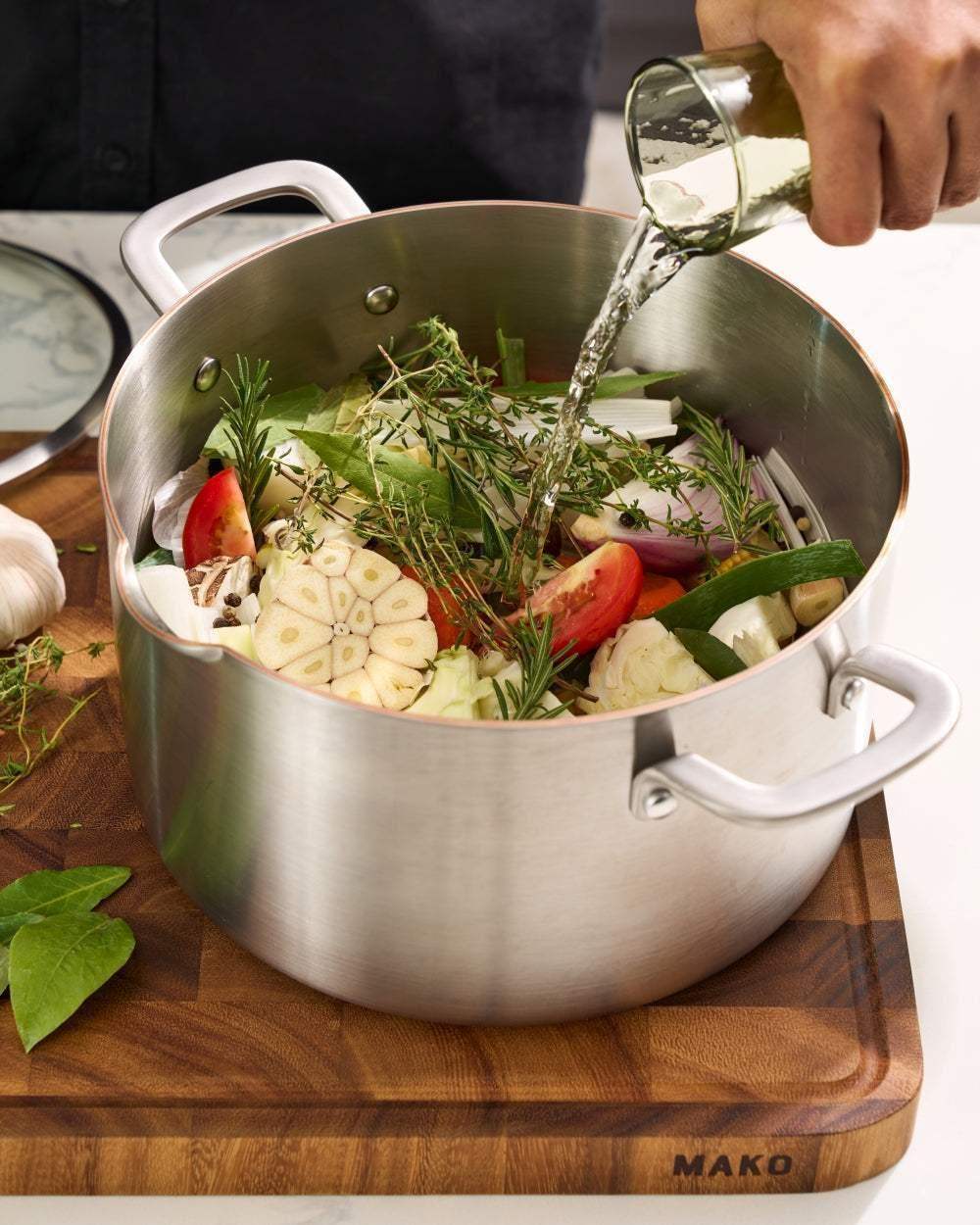
What is the difference between 5-ply, 3-ply and 1-ply cookware?
Many pans have a multi-layered construction where various metals with different qualities are strategically fused together in these thin layers. Why? To exploit the best of each material and achieve optimum cooking performance. This style of cookware is called ‘cladded’.
Let's break down what that means.

1-Ply cookware
- Uncladded cookware, literally made from a single layer of metal. This is usually aluminium, but sometimes stainless steel. Single-ply is the most budget-friendly of all pans.
- Heats quickly, but can easily overheat and cause food to stick if you’re not careful. It can also be prone to hot spots. Single-ply aluminium is not a very good conductor of heat.
- Single-ply aluminium pans can look thick, but they are actually very lightweight. This makes them easy to handle but also easily dented, warped or otherwise damaged.
- Not as durable as cladded cookware.

3-ply cookware
- Three layers, typically an aluminium or copper core (both excellent heat conductors), wrapped between an outer layer of durable stainless steel or other high-heat resistant material and an inner layer of non-reactive metal such as stainless steel.
- Gives more even heat distribution across the cooking surface than 1-ply.
- Is not so prone to hot spots and better heat control than single ply.
- More affordable than 5-ply cookware and also slightly lighter. Therefore, it’s marginally easier to handle and slightly more manoeuvrable.
- Less solid and durable than 5-ply.

5-ply cookware
- Has a five-layered construction, with a layer of aluminium or copper for heat conduction at the centre, a middle core of aluminium for extra heat retention and distribution, and a layer of durable stainless steel for enhanced performance.
- Heats up and cooks more evenly than 3-ply. Overall superior heat conduction and heat distribution than 3-ply. No hot spots.
- A slightly thicker build adds weight, but makes pans very durable and unlikely to warp, dent or otherwise damage.
- Because of the added materials and more complex manufacturing process, the cost is higher than single and 3-ply.










